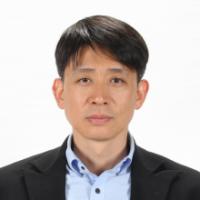
Prof. Gang-Won Jang received his BS in Mechanical Engineering from Seoul National University in 1998, MS and PhD from Seoul National University in 2000 and 2004, respectively. He is a Professor at Faculty of Mechanical and Aerospace Engineering, Sejong University, South Korea. His research fields include structural optimization, higher order beam theory for automotive body design, and wave simulation for NDE application.
Since the pioneering work of Bendsøe and Kikuchi in 1988, tremendous amount of researches have been conducted on topology optimization (TOP), so that the level of completeness of the optimization method almost arrives at the final stage. Compared to other CAE-based optimization methods, the biggest attraction of TOP is that it can give a creative design, starting from a very simplified initial design, and does not require a good starting design which has been mostly obtained through designers’ experience. This presentation consists of five small parts: 1) problem formulation of CAE-based optimizations, 2) TOP using density method, 3) TOP using other methods, 4) applications and 5) challenges. After the problem formulation of optimization is briefly reviewed for size/thickness optimization, shape optimization as well as topology optimization, basic theory for a density based TOP (or a SIMP model) is presented. The penalty exponent for SIMP is explained in terms of the stiffness of a micro composite structure. Numerical difficulties of a density based TOP such as checkerboard patterns and gray elements are discussed with their remedies. Level-set method and phase field method are also briefly introduced focusing on their advantages in representing clear boundaries. Because topology optimization is well defined in the form of a mean compliance minimization problem with mass constraint, it has been popularly utilized as a tool for lightweight design in automotive and aerospace industries. In this talk, a flatbed trailer optimization and a robot frame optimization are presented as lightweight design examples by TOP. To obtain concept designs for a flatbed trailer and a robot body, topology optimization is formulated as mean compliance minimization problems while torsional frequency as well as the mass of a structure are constrained. In many cases, subsequent optimizations such as thickness optimization should follow TOP because the results of TOP might suffer from grey elements and unclear boundaries. As an example for a nonstructural TOP problem, acoustic lens optimization for underwater imaging is presented. Difficulties of TOP in dealing with smooth boundaries and large-sized problems are discussed at the end of the presentation.
Lindsay Walton
lwalton@ucsd.edu
